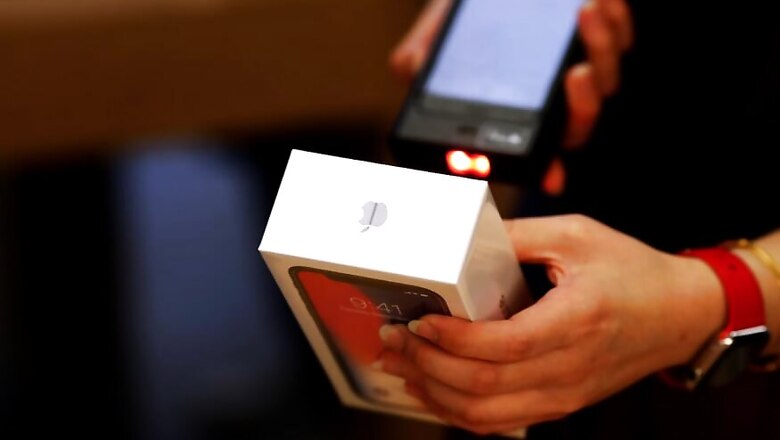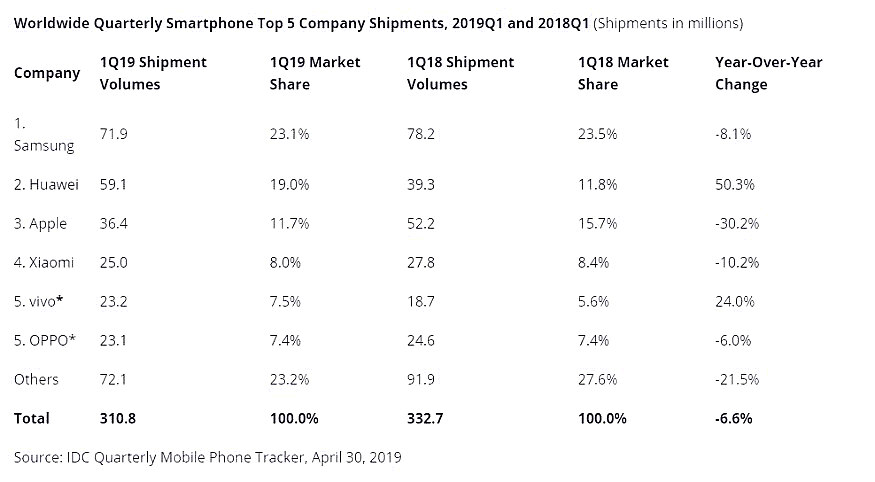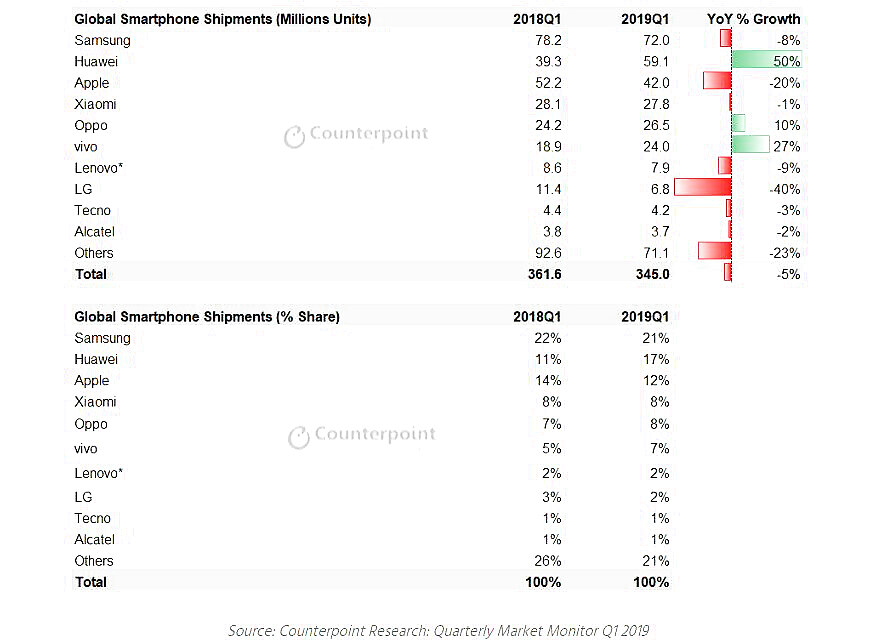
views
In Q1 2019 (Q2 in Apple’s books), the disclosure of Apple’s iPhone revenue figure appears to have caused some confusion. As the earnings calls started raining in, so did the smartphone shipment figures and estimates from market research firms. The most notable updates came from IDC, Strategy Analytics and Counterpoint Research, all of which have disclosed global smartphone shipment numbers in light of the recent earnings call. While the overall market trend and OEM rankings remain constant in all of the three reports, the numbers for Apple’s iPhone shipments appear to vary by a fair margin.
According to IDC, Apple has shipped a total of 36.4 million smartphones in the first three months of 2019, down by a staggering 30.2 percent from the 52.2 million units (company-disclosed figure) that it sold in Q1 2018. Strategy Analytics, meanwhile, states that Apple shipped 43.1 million phones in Q1 2019, down 17.4 percent YoY. At the same time, Counterpoint data suggests Apple shipped 42 million units, down 19.5 percent YoY. On this note, Strategy Analytics and Counterpoint’s data happen to be close enough, and within the typically acceptable range of variation.
Why this matters
While a difference of 3-5 percent in data between market research firms is typically acceptable, a staggering difference of 18.4 percent in the number of iPhones shipped in Q1 2019 is well beyond normal, and worth investigating. The reason is that it also hints at a problem that can be Apple’s biggest long-term problem — the inability to sell its latest flagships. During its latest earnings call, Apple announced that its iPhone-generated revenue was down by 17 percent, to $31.1 billion. If IDC’s data is to be considered, then the average price of every iPhone sold across the world in Q1 2019 stands at $855 (~Rs 59,300). However, if Strategy Analytics happens to be more accurate with the data, the average selling price of an iPhone in the same period stands at $720 (~Rs 49,900).

This median price difference is of great significance. Apple has always been known for pushing the barrier in terms of how expensive a smartphone can be. For instance, the very first generation iPhone, launched in 2007, cost $499 — outrageous for a mobile phone back then. Today, the latest, least expensive, 64GB iPhone XR starts selling at $749 (Rs 58,500 in India, a premium of ~Rs 6,500 over forex rate). The most expensive one, a 512GB iPhone XS Max, sells at a staggering $1,449 (Rs 1,44,900 in India, a massive premium of ~Rs 44,500 over forex rate).

While falling number of devices sold is one thing, the market data suggests that Apple may no longer be adept at moving the market and pushing the barrier for price points, which in turn chips away at the significance of the iPhone in today’s industry. If IDC’s data is more accurate, Apple’s median iPhone selling price of $855 across the world still falls north of the iPhone XR by at least $100. This would still mean that at least one of Apple’s latest iPhones are being picked up by many users, thereby keeping the iPhone relevant even today.

If, however, Strategy Analytics happens to be closer to the actual figure, it is a bigger concern for Apple, since its quarterly median selling price is below the minimum price of the iPhone XR. This essentially signifies that even among the iPhone units that still sell, more people are picking up the older iPhones, and the new iPhones no longer have the same attraction that allowed Apple to steadily command higher prices (which its buyers happily paid).
This may be because of increased competition, in which case Apple’s solution can be more straightforward. However, this can also be because Apple’s latest flagships do not offer a feature set that is significant enough to pay a huge premium for. Worst of all, it may also be because the product perception of the iPhone is starting to fade, and a once-elusive premium gadget has started losing a bit of its glamour. Apple would dearly hope that it is not the latter.
Grave implications
Apple has never been one to bend to industry norms, and has in fact been a trendsetter for the larger part of recent history. However, it is a bit concerning that the most prominent trend that Apple has managed to set is of the notch on phone displays — something we may have gotten used to, but do not necessarily like.
If Apple’s median price of the iPhone is indeed lesser than its cheapest new generation iPhone, Apple stands at risk of making its smartphone innovation redundant, and thereby inviting rivals to thrive in its own backyard. Was this the odd, weak quarter of sales? Maybe. But, if the iPhones can no longer command its extra edge that urged people to spend more, Apple may have a bigger problem to solve — the problem of building something that urges people to spend $1,500 on a phone, and still be happy about it.




















Comments
0 comment